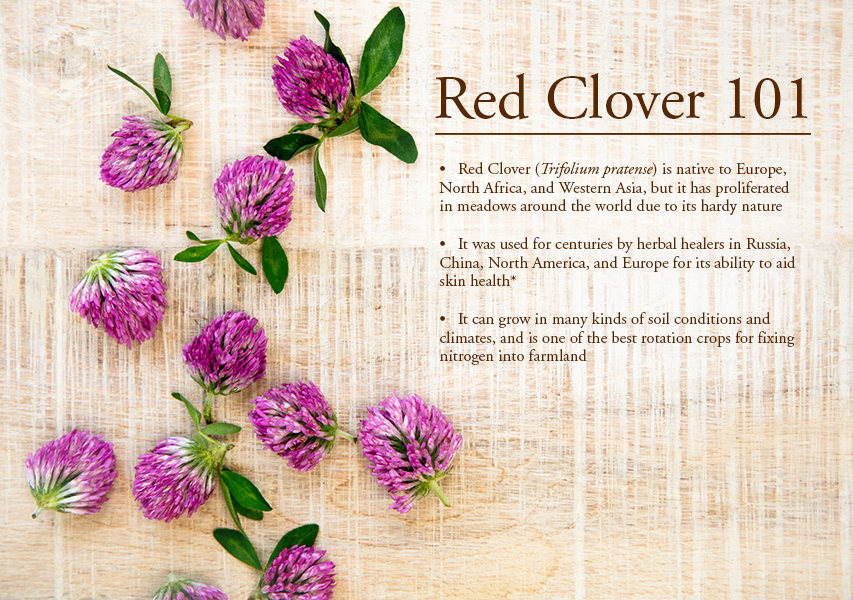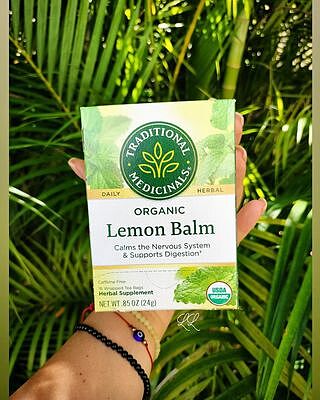Like a picked-up penny, red clover is one of those tokens of good fortune that isn’t exactly rare, but still has the power to charm. Found in temperate climates everywhere from the meadows of the Arctic Circle to the plains of central Asia, this pink-bristled blossom has been grown for thousands of years – in fact, it was one of the first herbs cultivated by early farmers, who sowed clover for their cattle and used it as a cover crop in fallow fields.
Although the four-leafed variety gets all the good-luck glory, most red clover plants have three leaves, hence its Latin name, Trifolium (meaning three leaves) pratense (meaning grown in meadows). The triple-leafed herb invoked the sacred for a variety of ancient cultures; Greeks and Romans associated it with the triad goddesses, while the clover reminded Celtic priests of their three-lobed symbol of the sun. Druids believed the blossoms could ward off nasty spells and evil spirits. Early Christians connected the three-leafed plant to the Christian trinity, and the less common four-leafed clover was associated with the four points of the cross. And of course, the Irish embraced the clover’s auspicious symbolism with more gusto than anyone else. An Irish rhyme dating to medieval times says a four-leafed clover has “one leaf for fame, one leaf for wealth, one for a faithful lover, one leaf for glorious health.”
Through the centuries, the health-supporting properties of red clover were celebrated in many herbal traditions around the world. As it propagated outward from its native habitat in Europe, North Africa, and central Asia, red clover was adopted by Russian herbalists, practitioners of traditional Chinese medicine, and indigenous North American healers for its ability to support healthy skin.*

Modern-day herbalists love red clover because it contains isoflavones, a type of phytoestrogen (a compound with a chemical makeup similar to the estrogen hormone). When the blossoms are dried and consumed as a tea or tincture, they are thought to promote skin health. That’s why you’ll also find it in our Weightless Cranberry tea, where it supports the formula with its tonic properties.*
Crowned with a soft, brush-like, deeply pink blossom, the red clover plant is as pretty as it is persistent. Though it likes sunny, well-drained soils best, it can grow in many kinds of soil conditions and climates, and it is well known to be one of the best rotation crops for fixing nitrogen into farmland. Though you wouldn’t know to look at it, the dainty-yet-hardy perennial is actually a member of the legume family, related to beans and peas.
It’s not by chance that the red clover we use in our Red Clover tea is of very high herbal quality. Unlike other teas that use the leaves and stems of the plant, we feature the more nutrient-dense blossoms, creating a softly floral and lightly fruity taste in the cup. Some of our favorite red clover comes from the sunlit fields of Albania, where it is harvested by hand.
Some say that the key to good luck is taking notice of the potential in all that surrounds you. Such is the case with red clover, a humble herbal friend whose familiar appearance masks health-supporting strength.*









































































































